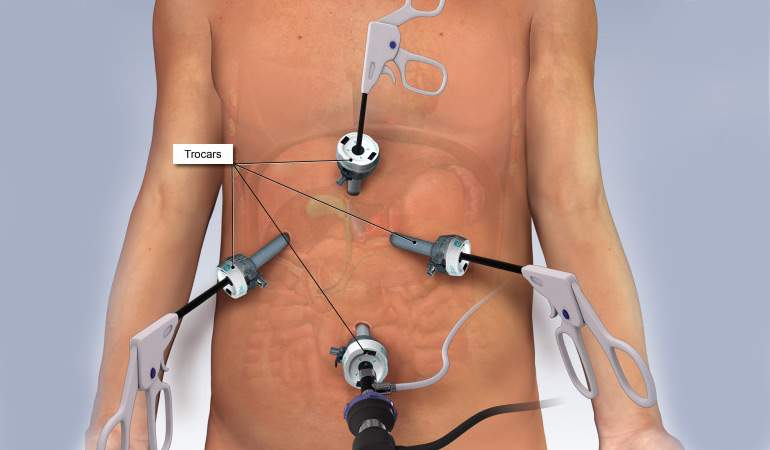What is Laparoscopic Cholecystectomy?

Symptoms Indicating Gall Bladder Problems
- Sudden and intense pain in the upper right abdomen
- Pain that radiates to the right shoulder or back
- Nausea and vomiting, especially after fatty meals
- Bloating or indigestion
- Fever and chills (if infection is present)
- Jaundice (yellowing of skin and eyes, if stones block bile ducts)
If you experience these symptoms repeatedly, it may indicate gallstones requiring surgical intervention.
Procedure / Treatment
During Laparoscopic Cholecystectomy:
- The patient is given general anaesthesia.
- Small incisions (usually 3-4) are made in the abdomen.
- A laparoscope (tiny camera) is inserted to view the gall bladder on a screen.
- Special surgical instruments are used to detach and remove the gall bladder.
- The incisions are closed with sutures or surgical glue.
The procedure typically takes 1-2 hours. Most patients can go home the same day or after overnight observation, with a recovery period of 1-2 weeks.
Prevention
While some risk factors like genetics cannot be changed, you can reduce the risk of gallstones by:
- Maintaining a healthy weight
- Losing weight gradually (rapid weight loss increases gallstone risk)
- Eating a balanced diet rich in fibre and healthy fats
- Exercising regularly
- Avoiding prolonged fasting or skipping meals
However, once gallstones form and cause symptoms, surgery is the most effective treatment.
Benefits of Laparoscopic Cholecystectomy
- Minimally invasive with small scars
- Less pain post-surgery compared to open surgery
- Shorter hospital stay and faster recovery
- Quick return to daily activities
- Lower risk of complications such as infections or hernias
Types of Gall Bladder Surgery
Laparoscopic Cholecystectomy – Standard, minimally invasive procedure using small incisions and a camera. It is the preferred and most common method.
Open Cholecystectomy – Traditional surgery involving a larger abdominal incision. It is performed if complications like severe infection, scarring, or abnormal anatomy are present.
